第2章 CHAPTER I.(1)
ABOVE THE CATARACT.
WITHOUT troubling the public with a description of that portion of the Nile to the north of the first cataract, or with a detailed account of the Egyptian ruins, that have been visited by a thousand tourists, I will commence by a few extracts from my journal, written at the close of the boat voyage from Cairo :--"May 8, 1861.--No air. The thermometer 104 degrees Fahr.; a stifling heat. Becalmed, we have been lying the entire day below the ruins of Philae. These are the most imposing monuments of the Nile, owing to their peculiar situation upon a rocky island that commands the passage of the river above the cataract. The banks of the stream are here hemmed in by ranges of hills from 100 to 250 feet high; these are entirely destitute of soil, being composed of enormous masses of red granite, piled block upon block, the rude masonry of Nature that has walled in the river.
The hollows between the hills are choked with a yellow sand, which, drifted by the wind, has, in many instances, completely filled the narrow valleys. Upon either side of the Nile are vestiges of ancient forts. The land appears as though it bore the curse of Heaven; misery, barrenness, and the heat of a furnace are its features. The glowing rocks, devoid of a trace of vegetation, reflect the sun with an intensity that must be felt to be understood. The miserable people who dwell in villages upon the river's banks snatch every sandbank from the retiring stream, and immediately plant their scanty garden with melons, gourds, lentils, &c. this being their only resource for cultivation. Not an inch of available soil is lost; but day by day, as the river decreases, fresh rows of vegetables are sown upon the newly-acquired land. At Assouan, the sandbanks are purely sand brought down by the cataracts, therefore soil must be added to enable the people to cultivate. They dig earth from the ruins of the ancient town; this they boat across the river and spread upon the sandbank, by which excessive labour they secure sufficient mould to support their crops.
In the vicinity of Philae the very barrenness of the scenery possesses a charm. The iron-like sterility of the granite rocks, naked except in spots where the wind has sheeted them with sand;the groves of palms springing unexpectedly into view in this desert wilderness, as a sudden bend of the river discovers a village; the ever blue and never clouded sky above, and, the only blessing of this blighted land, the Nile, silently flowing between its stern walls of rocks towards the distant land of Lower Egypt, form a total that produces a scene to be met with nowhere but upon the Nile. In this miserable spot the unfortunate inhabitants are taxed equally with those of the richer districts--about fivepence annually for each date palm.
"May 9.--A good breeze, but tremendous heat. Although the floor and the curtains of the cabin are continually wetted, and the Venetian blinds are closed, the thermometer, at 4 P.M., stood at 105 degrees in the shade; and upon deck, 137 degrees in the sun.
This day we passed the ruins of several small temples. The country is generally rocky, with intervals of ten or twelve miles of desert plains.
"May 10.--Fine breeze, the boat sailing well. Passed several small temples. The henna grows in considerable quantities on the left bank of the river. The leaf resembles that of the myrtle;the blossom has a powerful fragrance; it grows like a feather, about eighteen inches long, forming a cluster of small yellow flowers. The day pleasantly cool; thermometer, 95 degrees.
"May 11.--At 5 A.M. we arrived at Korosko; lat. 22 degrees 50minutes N.; the halting-place for all vessels from Lower Egypt with merchandise for the Soudan."At this wretched spot the Nile is dreary beyond description, as a vast desert, unenlivened by cultivation, forms its borders, through which the melancholy river rolls towards Lower Egypt in the cloudless glare of a tropical sun. From whence came this extraordinary stream that could flow through these burning sandy deserts, unaided by tributary channels? That was the mysterious question as we stepped upon the shore now, to commence our land journey in search of the distant sources. We climbed the steep sandy bank, and sat down beneath a solitary sycamore.
We had been twenty-six days sailing from Cairo to this point. The boat returned, and left us on the east bank of the Nile, with the great Nubian desert before us.
Korosko is not rich in supplies. A few miserable Arab huts, with the usual fringe of dusty date palms, compose the village; the muddy river is the frontier on the west, the burning desert on the east. Thus hemmed in, Korosko is a narrow strip of a few yards' width on the margin of the Nile, with only one redeeming feature in its wretchedness--the green shade of the old sycamore beneath which we sat.
I had a firman from the Viceroy, a cook, and a dragoman. Thus my impedimenta were not numerous. The firman was an order to all Egyptian officials for assistance; the cook was dirty and incapable; and the interpreter was nearly ignorant of English, although a professed polyglot. With this small beginning, Africa was before me, and thus I commenced the search for the Nile sources. Absurd as this may appear, it was a correct commencement. Ignorant of Arabic, I could not have commanded a large party, who would have been at the mercy of the interpreter or dragoman; thus, the first qualification necessary to success was a knowledge of the language.
After a delay of some days, I obtained sixteen camels from the sheik. I had taken the precaution to provide water-barrels, in addition to the usual goat-skins; and, with a trustworthy guide, we quitted Korosko on the 16th May, 1861, and launched into the desert.